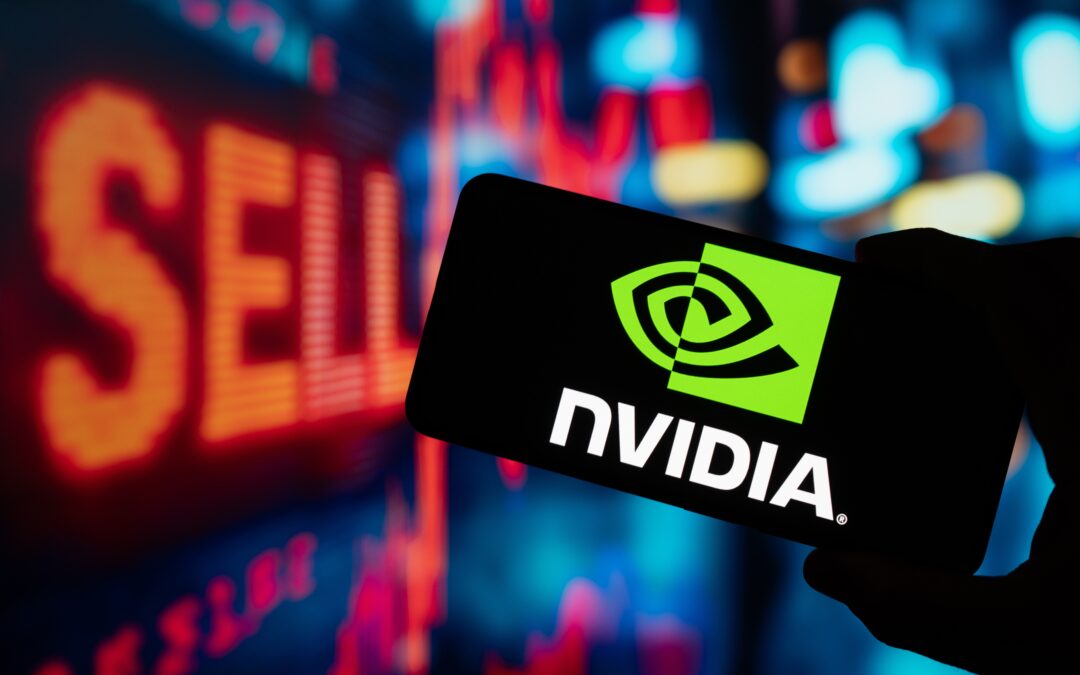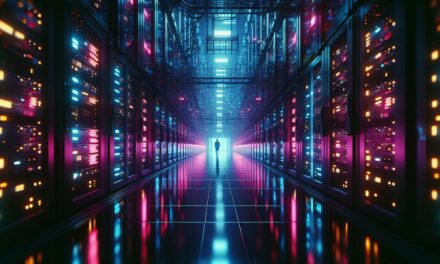Earlier this week, all eyes turned to Nvidia (NVDA) for the company’s quarterly earnings announcement…
The hardware giant has become so dominant and so monolithic that it’s now a bellwether for our modern tech-driven economy.
Much like investors once watched the earnings reports of steel companies to track the health of our growing industry, Wall Street is now hanging on every word that comes out of Nvidia’s management team.
It’s a kind of tech dominance that might seem wholly unprecedented. Except it’s not.
Because this has all happened before, with another dominant tech company that’s still a household name today.
And the blowback was massive.
Hit today’s video below for the full story:
Video transcript:
Welcome to Moneyball Economics. I’m Andrew Zatlin, and today I want to talk about the systemic risk, both stock market and economic risks associated with the world’s largest company by stock market market capitalization.
You probably know the company I’m talking about. They are a high flying, high tech hardware company. In fact, their technology is now considered foundational. The internet will not exist without it, and that’s a huge thing because it’s driving this massive hyperbolic growth in their sales. We’re talking about year-over-year sales being 50, 60, even 66% delivering that level of sales quarter after quarter after quarter, and as a result, their stock prices similarly on fire.
We’re talking about an 8x growth in stock price over less than two years. However, because they’re so large and because everybody owns them, you have to consider what happens if they stumble. If sales growth isn’t as strong and it comes down faster than most people expect, what happens to the stock price and what happens to the economy?
Both take a hit and both could lead to not just a sharp drop in the stock market, but a potential recession.
By the way, I’m not talking about Nvidia, I’m talking about Cisco systems.
Because 25 years ago, Cisco systems was the high-flying company of its day. And we are repeating everything about Cisco systems, setting ourselves up for a sharp pullback, and I want to talk about why that’s the case and what you can do about it.
I was at Cisco Systems in the nineties and in the 2000s, and let me tell you something. What I’m seeing with Nvidia is one-to-one with Cisco systems. Cisco systems was the leader, the dominant force in the router switch technology field, and that enables the internet. Basically, all internet traffic is using Cisco gear back then. As a result, everybody needed Cisco gear and demand outstripped supply.
Cisco responded in the following way. They started rationing. If you wanted a router or a switch, we’d give you about half of your order. So customers got smart. If a customer needed 10 routers, they would double the order. They’d say, take 20 routers, and we’d give them the 10. Turns out it’s the 10 that they needed.
Well, eventually demand and supply reached an equilibrium point and suddenly we saw orders being canceled, left, right, and center.
Suddenly we realized we had been in a major bubble and not just Cisco, everybody, this was a massive ecosystem. You had tens of billions of dollars of semiconductor chips relying on all these routers and switches being built and sold, and there were other technologies out there that depended on it.
Whether it was Oracle and software type of technology, whether it was the competition, whatever it was, the entire high-tech ecosystem had harnessed themselves to the glory of the internet growth of routers and switches such that when that growth suddenly was clearly a bubble and it wasn’t a 50% future growth, it was more like a 30-35% growth.
That Wyle E. Coyote moment, that falling off the cliff moment came and what happened?
Well, it wasn’t just a stock market revaluation that then led to some shuttering. It had very real economic impact.
Consider this. Cisco systems went from a $10 to $80 stock price within about two years. When it got revalued, when that growth was no longer 50% out to the future, forever and ever growth, but was closer to a 30% growth, stock price came down.
It went from $80 rapidly down to $20, and that collapse was triggered by the way the stock market works. That is I’m talking about leverage institutional investors.
They bought up a lot of Cisco stock and as it grew and grew, they leveraged up and up until when that stock suddenly came down, all these investors were caught out. Then the margin calls started coming in.
They had over leveraged themselves because the underlying asset, the Cisco stock was no longer on fire. It was imploding. Well, that led to, well, now I’m going to sell my Cisco stock. That led to further price erosion, and again, it wasn’t limited to Cisco.
If Cisco was seeing slower growth, so was the entire hardware ecosystem. In fact, so was high tech in general, better get out. It didn’t matter if you had a margin call you sold. That led to further implosion, implosion, and finally we had the stock market collapse. That is part of why we had a recession. Again, the 401(k)s collapsed. A lot of that money is used for, say you borrow from your 401(k) to buy a house, the down payment, buy a car, and so on and so forth, plus Silicon Valley jobs suddenly disappeared.
But there was another form of blowback, and again, it goes back to the supply chain, the real economic impact demand for stuff stopped. You had billions and billions and billions of dollars of hardware that simply wasn’t needed. Big recession.
How does that compare to today? Well, Nvidia, if NVIDIA’s stock price comes down, say 20%, that’s a $1 trillion impact on the stock market, but that’s just for NVIDIA’s stock price. Now you’ve got that leveraging up how Nvidia stock is being used to further invest, borrow from, and you’ve got not just Nvidia, we’ve got AMD Micron, all these other players in the AI world.
In essence, you would see the stock market implode rapidly. Let’s say a stock market comes down, say 10%, even not an unimaginable number, but it doesn’t stop there because again, we do have the real world economic impact that would come a sudden reconsideration of the supply chain from suddenly realizing, Hey, we don’t need all these boxes and we don’t need all these chips.
I think it’s going to be less severe from an economic impact standpoint than it was with Cisco because back in 2000, 2001, we didn’t have a lot of destinations for semiconductor chips. You had data center stuff, you had internet related stuff, and you had PCs. Today, we’re far more diversified in the products that use all of these semiconductor chips, but it doesn’t matter.
We aren’t going to see an inevitable slowdown, and what I’m saying is that a slowdown in Nvidia sales isn’t going to be a gradual steady slowdown as many people would expect. It’s going to be a sudden pull out the rug from under us.
When is this going to happen? I look at one data point to know that, and that’s the sales from the manufacturer of Nvidia chips, Taiwan Semiconductor, TSM. Their sales have been like NVIDIA’s growing very high 40% year over year delivering that quarter after quarter until we got to June this year, sales suddenly stumbled 27% and July is the same.
Not yet the panic moment, but I would ask you to consider two things. One, TSM sales have been growing, but they haven’t peaked. They’ve been kind of slowing down. June and July’s sudden halt is more tied to what Trump did with China and Nvidia sales. He blocked them, so when NVIDIA suddenly found out in April they couldn’t sell to China, well, they lowered their demand from their manufacturer TSM, so that’s why sales slow down April may.
Well, demand for chips TSM is going to go down accordingly in June and July. That has changed in July, Trump came back and said, okay, tell you what you can sell to China, but the damage is somewhat done now. You’ll see a backlog. You’ll see again that slowdown that happened in June and July will now be offset by a sudden ramping up as the demand comes back in force.
Doesn’t matter. All it’s doing is saying, “Hey, in general, we’re just making up for some lost ground, but TSM is still signaling that they’re slowing.”
June and July, that slowdown is China, but even before June and July, there’s a slowdown in chip demand from Nvidia. I believe that that slowdown is going to be much more sudden as we get into next year.
So I believe that the “a-ha!” moment is going to be sometime in the second quarter and that’s when we’re going to see a Cisco type event where everyone says, wait a second, I don’t really need this much AI gear. I’m Google, I’m Apple, I’m Facebook. I’ve outfitted my centers, my data centers sufficiently. Thank you Nvidia. I’m canceling sales, so I see that happening out in the second quarter.
And the way to position for that, well, obviously by puts on Nvidia far out of the money, 10%, 20%, you pick a number for Cisco, they fell from $80 to $20 within a year. It gives you a sense of what could happen to Nvidia.
Bottom line, expect the unexpected, expect a sudden sharp drop in Nvidia and maybe you want to also consider the entire ecosystem as well. Lots of ways to position for the sharp drop. I think the timing is six to nine months away.
We are in it to win it, folks.
Zatlin out.

Andrew Zatlin
Editor, Moneyball Economics





